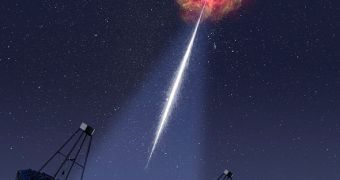Astronomers have known about the Crab pulsar and the nebula around it since 1054 CE, when the precursor star to this object blew up. Even now, nearly 1,000 years later, astronomers don't fully understand this object, and recently they found it to be more energetic than it should have been.
Observations of the Crab Nebula are being conducted at a constant pace, as astronomers use it to understand the processes that take place shortly after a star explodes. In cosmic times, a millennium means nothing, when considering that it takes a few millions years for a star to form.
But studies conducted on nebula pulsars thus far have revealed a set of data which researchers used to calculate the total energy that should come out from this class of objects at any given time. In effect, they created a way of estimating how much energy such a star would produce.
However, in the latest study they conducted on the Crab pulsar, an American team of astronomers noticed that the object was releasing radiations at much higher-energies that it should be. It was particularly active in the gamma-ray range.
In this region of the electromagnetic spectrum, it was emitting light at energy levels of up to 100 billion electron-volts (BeV). These radiations are about 100 billion times more energetic than visible light.
The pulsar at the core of the nebula is in fact nothing more than a fast-spinning neutron star, which is releasing streams of radiation from its poles. These jets are oriented directly at our planet, which is why gamma-ray telescopes see the Crab object as if it were an intermittent lighthouse (hence the name).
Neutron stars are themselves the collapsed cores of massive stars, which reached the end of their burning cycles and exploded in supernova events. The precursor objects were not large enough to collapse into a black hole, but neutron stars are extremely dense as well.
“If you asked theorists a year ago whether we would see gamma-ray pulses this energetic, almost all of them would have said, 'No.' There's just no theory that can account for what we've found,” explains Martin Schroedter, one of the corresponding authors of the new study.
He holds an appointment with the Harvard-Smithsonian Center for Astrophysics (CfA). Researchers from the University of California in Santa Cruz (UCSC) were also a part of the work, which was detailed in the October 7 issue of the top journal Science.
“It turns out that being persistent and stubborn helps. These results put new constraints on the mechanism for how the gamma-ray emission is generated,” adds UCSC postdoctoral researcher and corresponding study author Nepomuk Otte.

 14 DAY TRIAL //
14 DAY TRIAL //